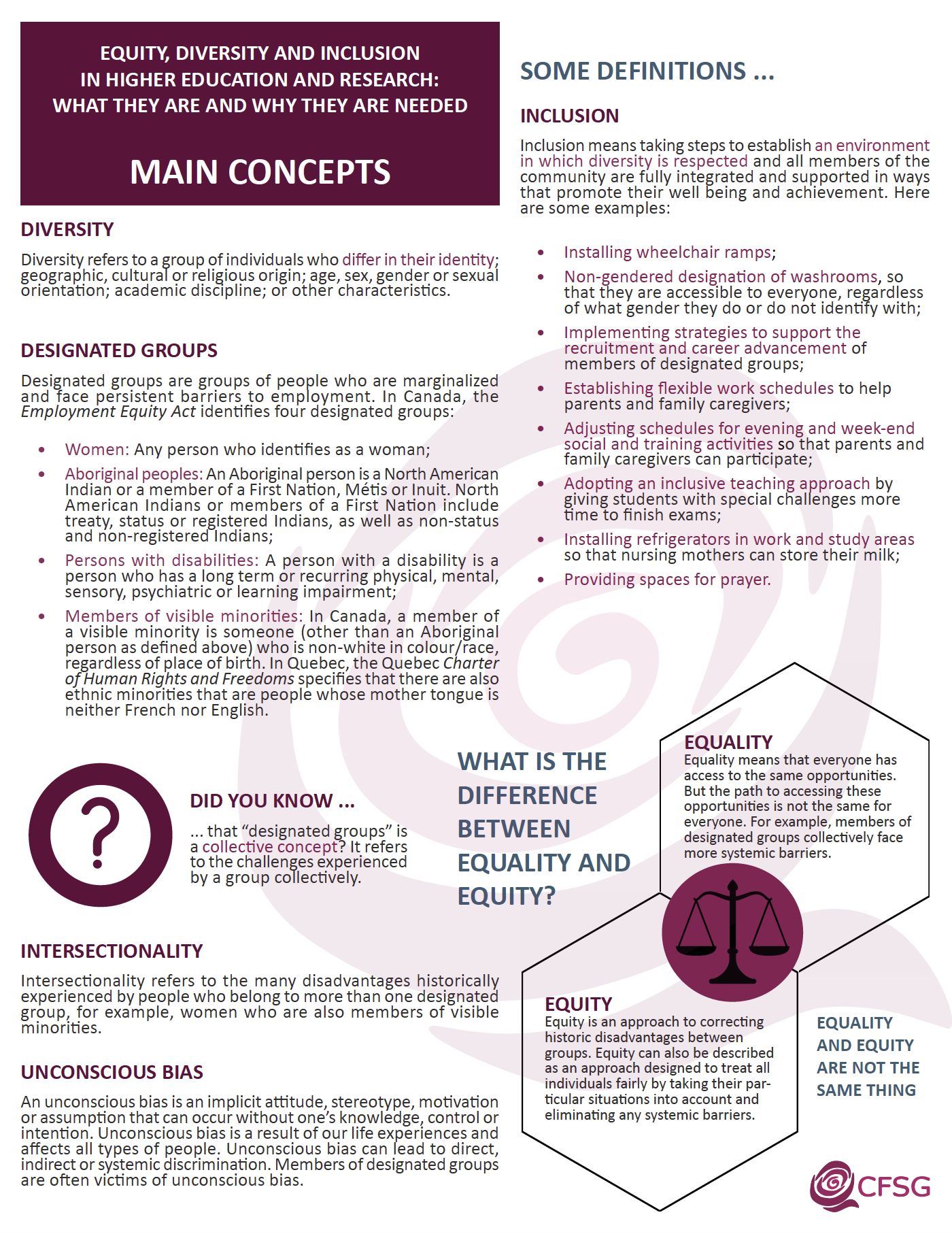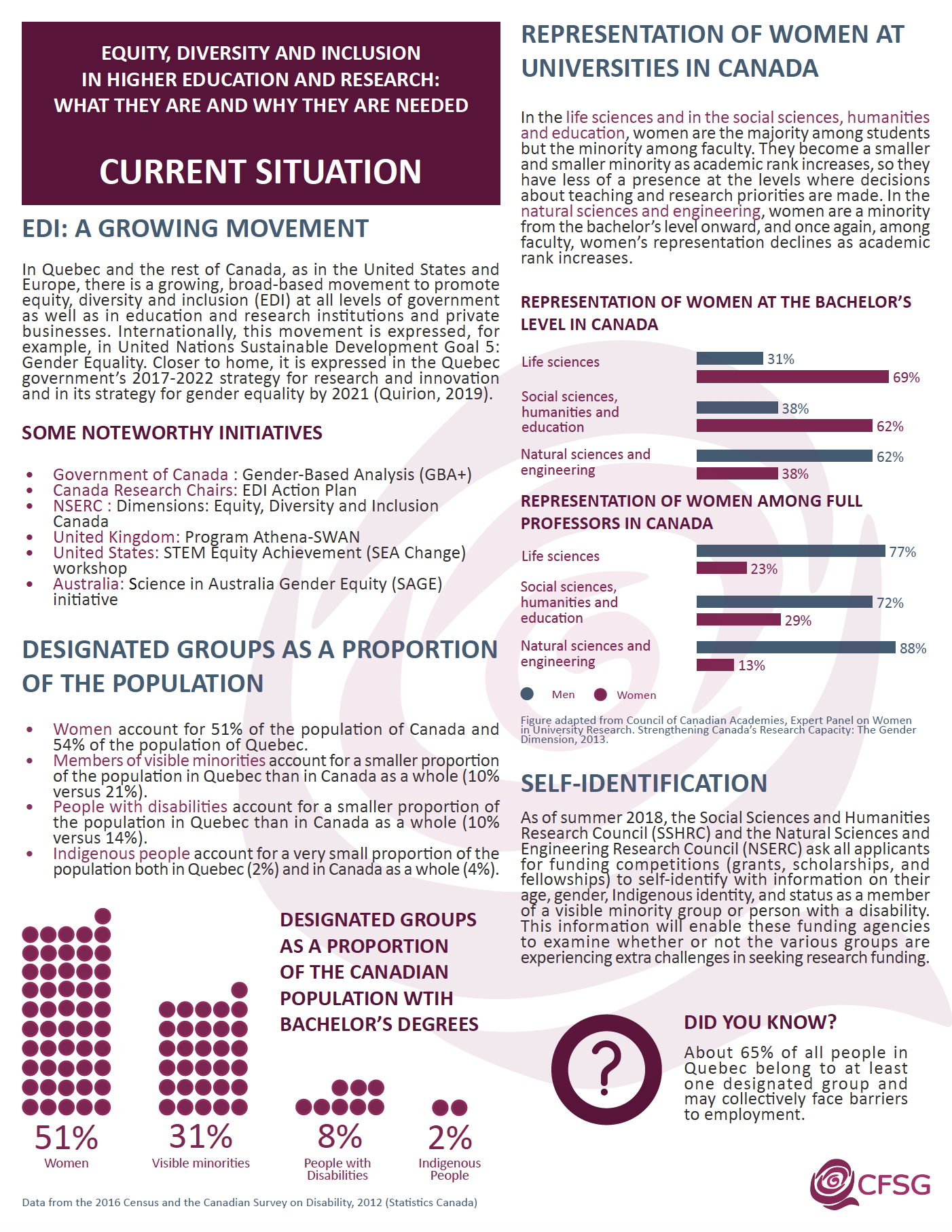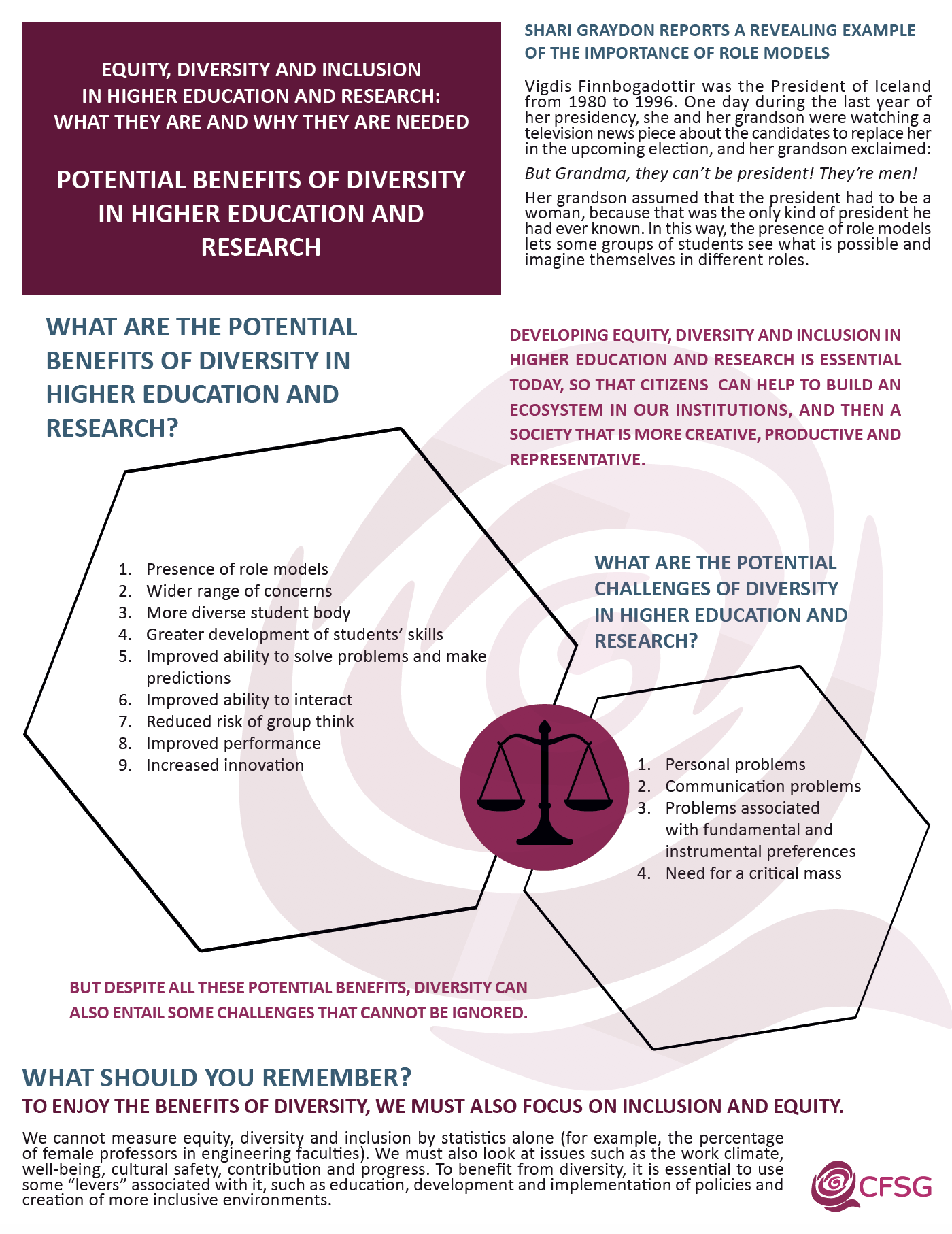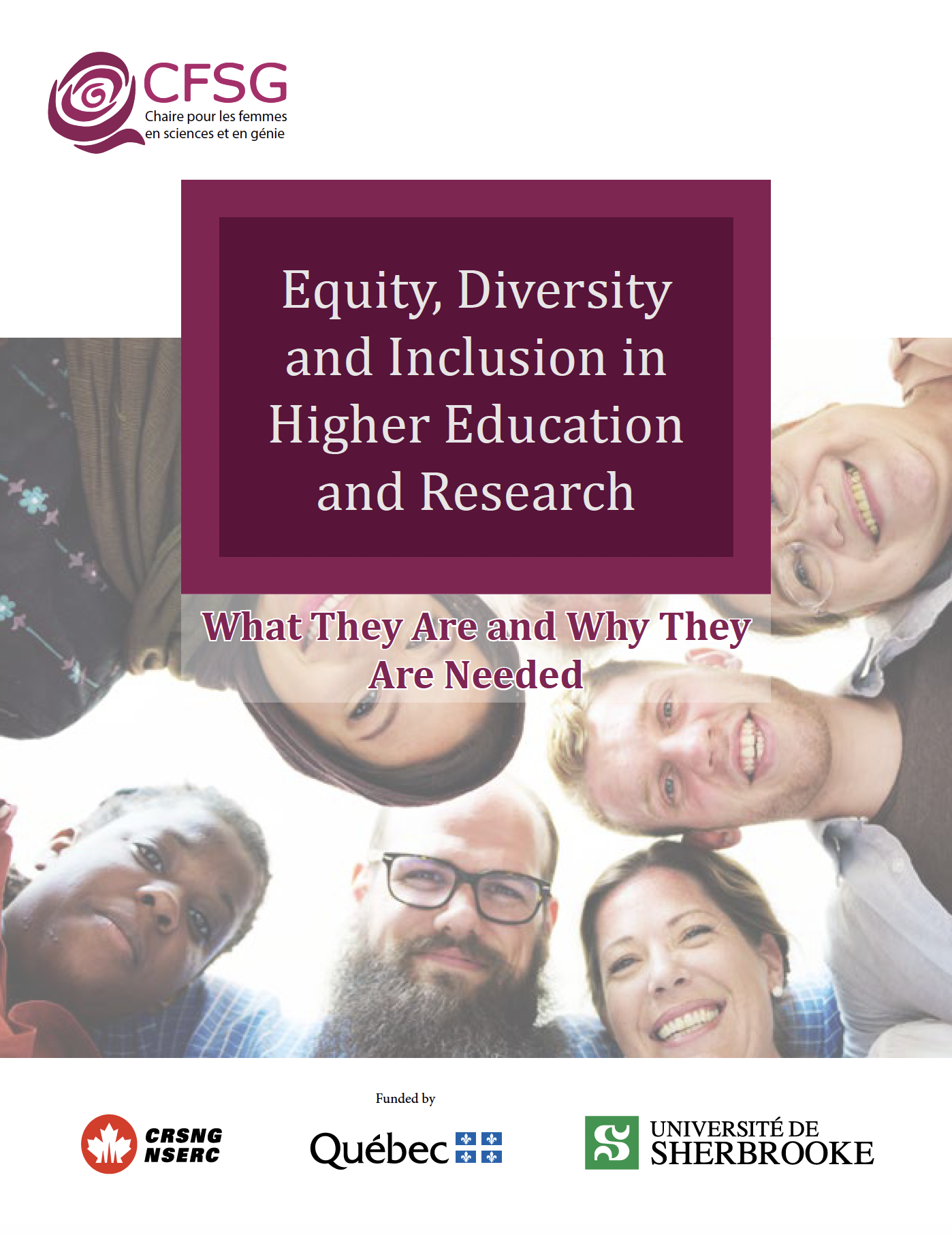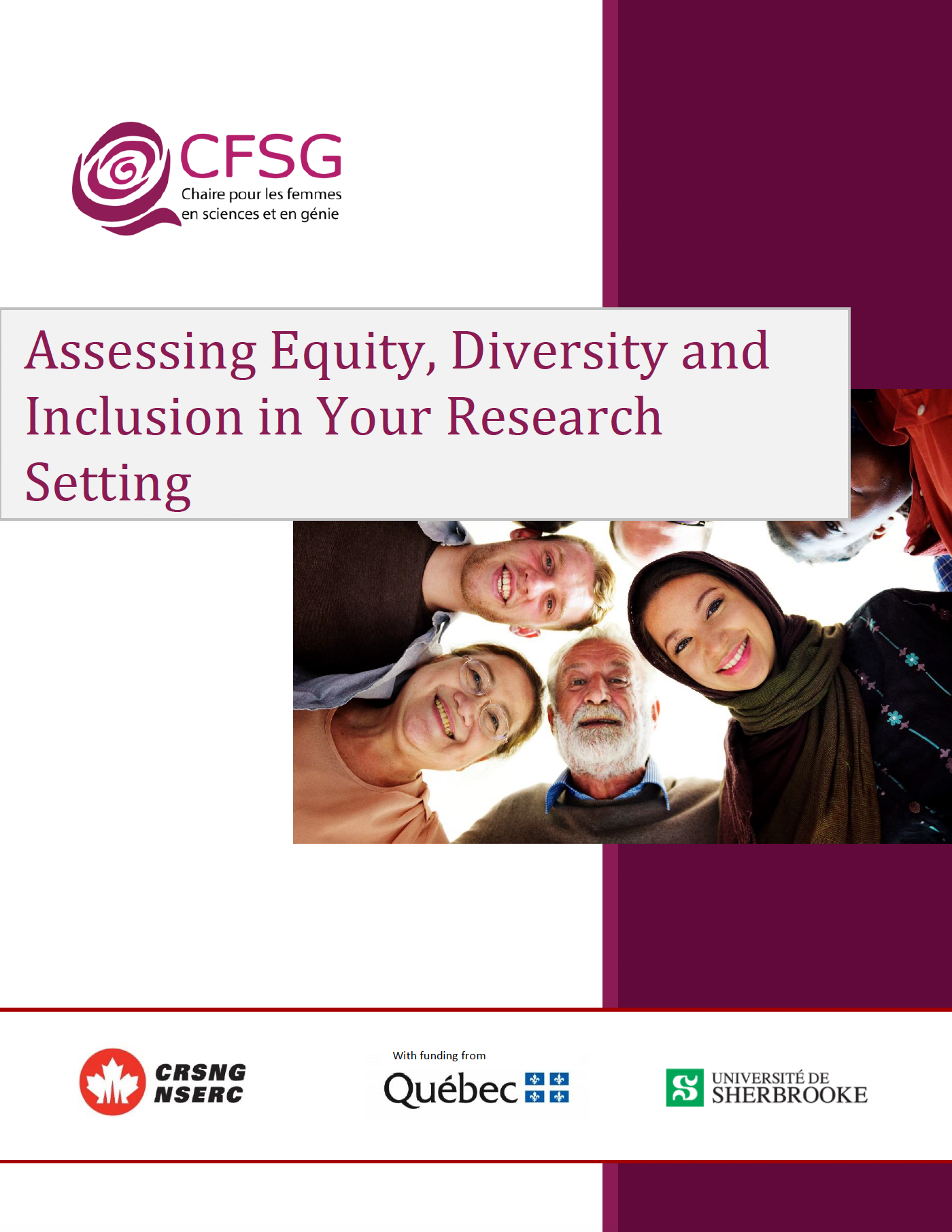These online resources are designed to raise awareness of equity, diversity and inclusion (EDI) within the university community for greater integration and representation of designated groups in higher education and research. Browse through the different sections below for a better understanding of the importance of these resources.
EDI: Solutions for New Realities
In recent years, new socio-economic, demographic and technological realities have changed our society. In order to meet these new challenges, it must involve all the people who make it up. This is why in Canada, the United States and Europe, a global movement for equity, diversity and inclusion (EDI) has taken root and is gaining momentum at the level of government authorities, institutions, cities and private companies. The following concepts summarize the solutions that we must put forward to meet these new challenges:
Equity: An approach aimed at treating each individual and each group fairly, taking into account their particular characteristics in order to place them on an equal footing. It is opposed to uniformity in the systematic application of a standard without taking into account the differences and diversity of society. It aims to ensure that everyone achieves the same results and is entitled to the same benefits (equal opportunities).
Diversity: The range of living conditions, ways of expression and experiences of different populations based on factors such as age, culture, ethnicity, education, gender, disability, sexual orientation, immigration status, place of residence, language and religion. Source: Status of Women Canada
Inclusion: An action aimed at creating an environment that respects diversity, fully integrates all members of its community, supports them and offers them support measures to promote their well-being and fulfillment. It is a sustained commitment aimed at welcoming, integrating, accompanying and supporting people on their journey.
These definitions are taken from the UdeS website.
What about at the university level?
In the contemporary vision, universities are places of training, innovation, advancement and production of knowledge. From this point of view, they participate directly in the development of our society. In order to represent the interests of the community as a whole, universities must themselves be bearers of values such as equity, diversity and inclusion and express them at various levels: to management, staff and students.
Who are these resources for?
This online training has been developed to raise awareness among decision-makers, professors, human resources and research staff, recruitment committees and, eventually, the entire university community.
Fact Sheets
The following documents were produced from the training course Equity, Diversity and Inclusion in Higher Education and Research: What They Are and Why They Are Needed, available in French only. Each document represents the information contained in one training capsule for a total of four summary documents.
EDI Information Resources
Use these documents to increase your knowledge and to facilitate equity, diversity and inclusion in your workplace or research environment.
- Equity, Diversity and Inclusion in Higher Education and Research: What They Are and Why They Are Needed: Refer to this complete reference document for more information on EDI in research.
- Assessing Equity, Diversity and Inclusion in Your Research Setting: Conduct a self-diagnosis and a plan for welcoming and integrating people into your university work environment.
- Considering Equity, Diversity and Inclusion in Research: Use this document as a tool when writing a research grant application that will meet the EDI criteria of the various government granting agencies. You can print it on an 11x17 double-sided sheet and fold it in half.

